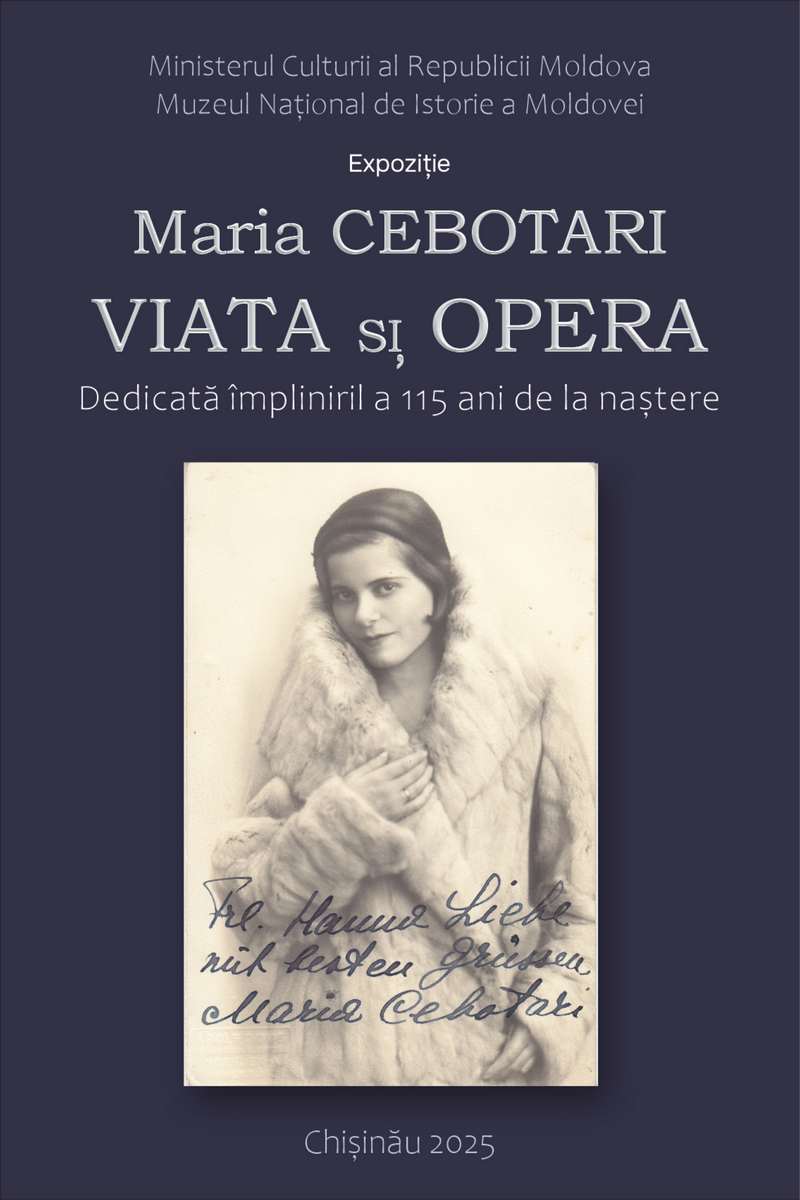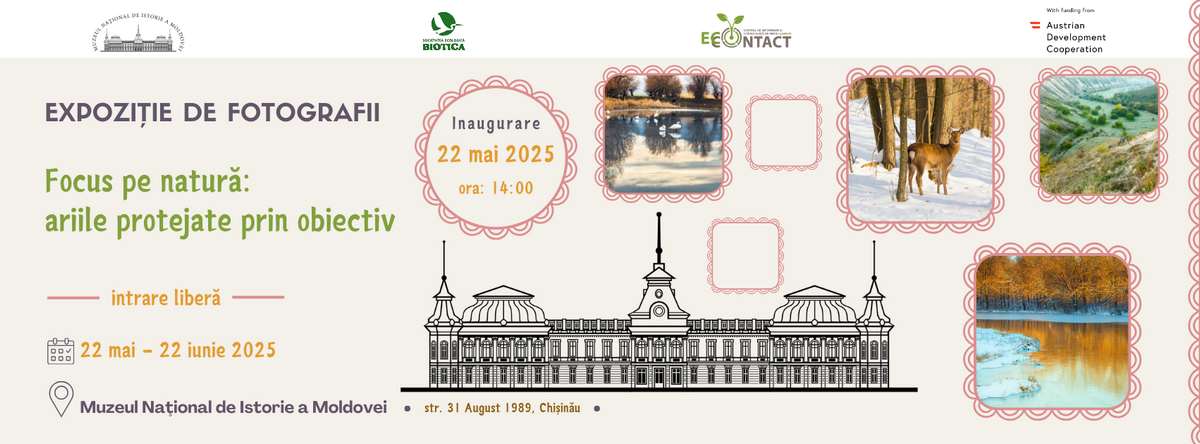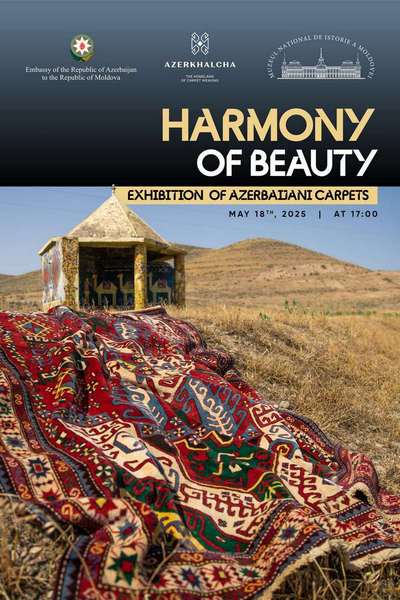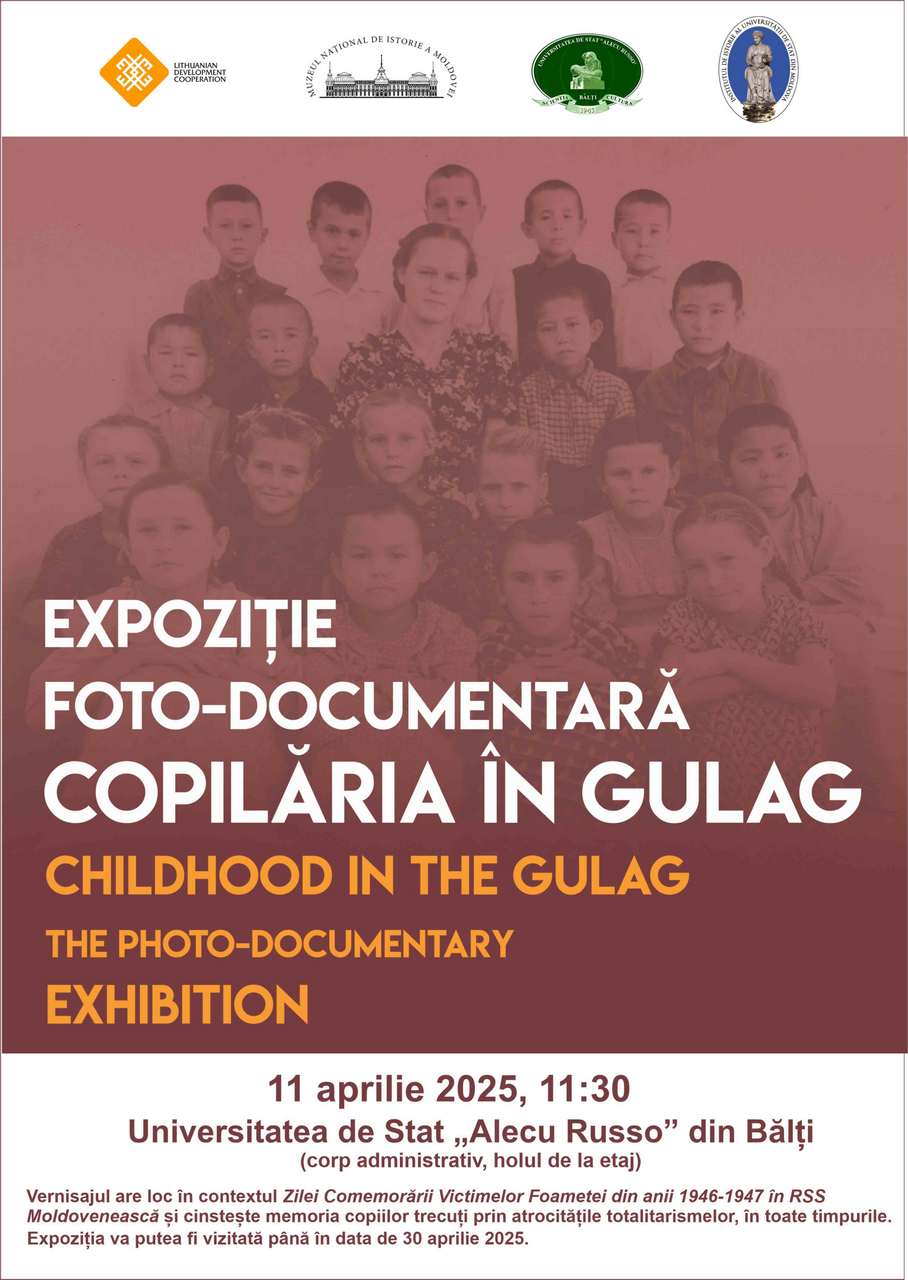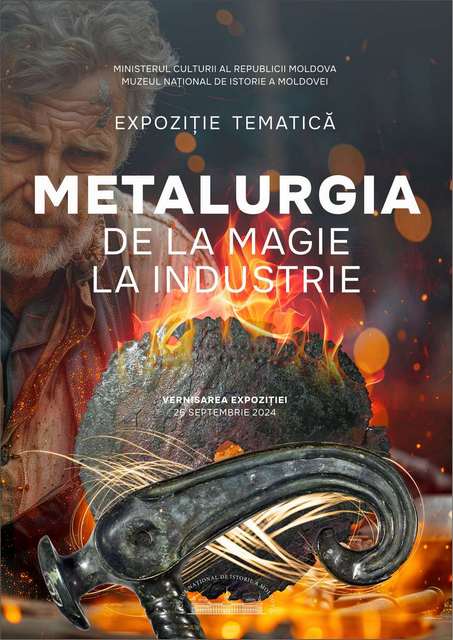  Events Archive Events Archive
Conference and launch of the catalog raisonné "Valentina Rusu Ciobanu" in Iasi and Chisinau
October 26, 28, 2023
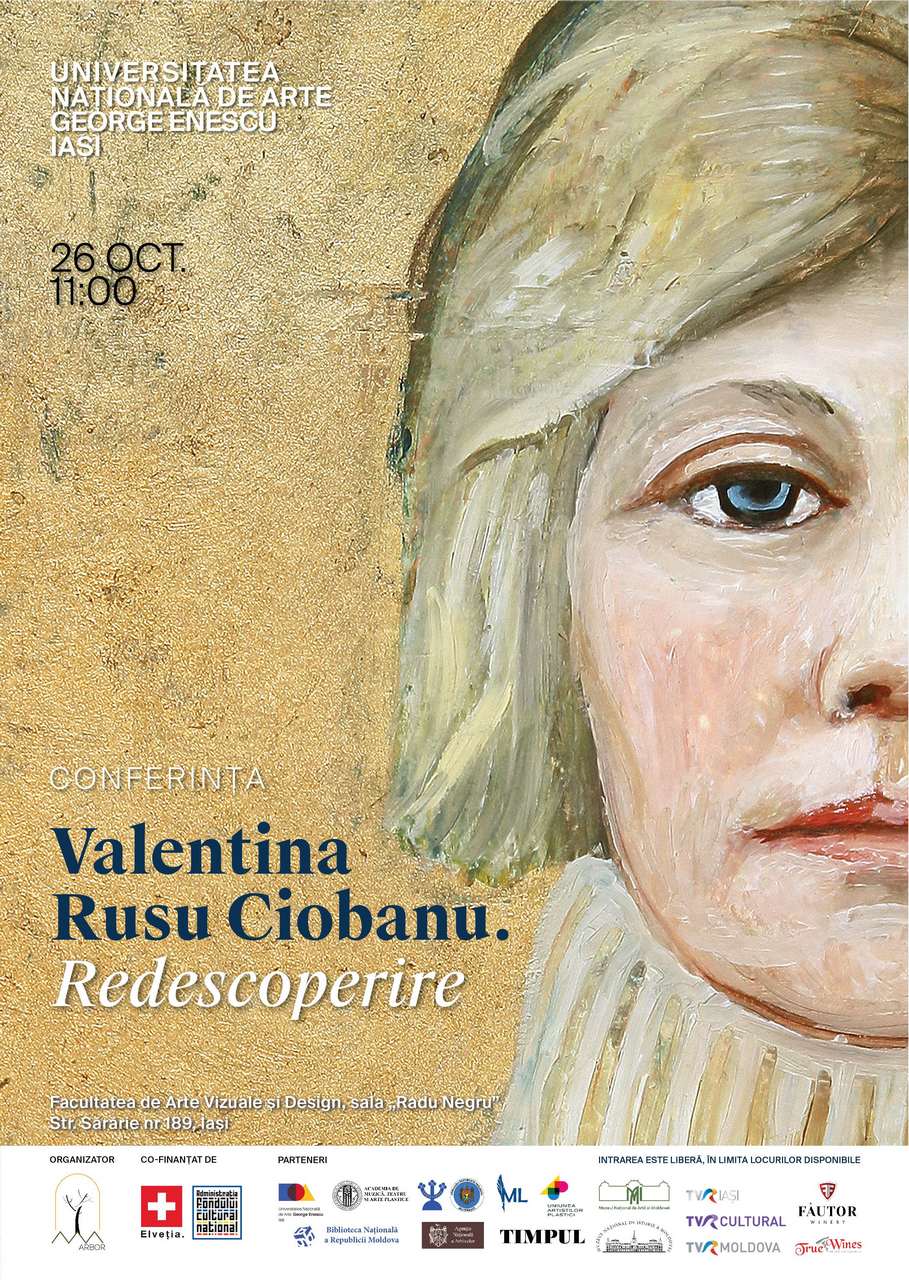 The Association for Culture and Arts Arbor (Romania) and the Arbor Institute for Culture (Republic of Moldova) are pleased to invite the public from Iasi and Chisinau to the conference dedicated to the life and creation of the painter Valentina Rusu Ciobanu and to the launch of the volume "Valentina Rusu Ciobanu", the first catalog raisonné dedicated to this great artist from across the Prut. The Association for Culture and Arts Arbor (Romania) and the Arbor Institute for Culture (Republic of Moldova) are pleased to invite the public from Iasi and Chisinau to the conference dedicated to the life and creation of the painter Valentina Rusu Ciobanu and to the launch of the volume "Valentina Rusu Ciobanu", the first catalog raisonné dedicated to this great artist from across the Prut.
Valentina Rusu Ciobanu (1920 - 2021), born in Chisinau, in the Kingdom of Greater Romania, belonged to the generation formed in the intellectual effervescence of the interwar period. In the period 1942-1944 he studied at the Academy of Fine Arts in Iasi, in the class of Prof. J. L. Cosmovici, assisted by the one who would become the great Corneliu Baba. With the reoccupation of Bessarabia by the Soviet troops, the young painter is forced to return to Chisinau, where she finishes her studies, together with other repatriated artists. He will succeed in a few years, despite the intimidation and restrictions exercised by the communist censorship, to assert himself as the most important name of plastic art in Chisinau. A synthetic picture of the difficult creative conditions of those turbulent years is provided by the painter herself: I've been through hard times. The communists intended not only to change our way of life, but also our mentality and the criteria for appreciating good and evil; they came with absurd pretensions, their impertinence had a demoralizing effect especially on artists, since a painter was told what and how to draw, being required from the very beginning to shape his work differently than he had conceived. We took refuge in workshops and thus preserved ourselves as a living cell from which a healthy organism could develop in more favorable times. We lived a time parallel to that lived by our bitter city. And I painted for you, the people of today, with the hope that you will understand the price we paid to remain whole people and true creators.
Valentina Rusu Ciobanu left an impressive heritage of works, today in the family collection and in the museums of the Republic of Moldova and the Russian Federation. In Romania, a single painting by the artist is in the collection of the Bucharest Municipal Art Gallery, thanks to a private donation from 2020. The Romanian public discovered the work of Valentina Rusu Ciobanu relatively late, 3 years ago, on the occasion of an anniversary exhibition, marking the painting's centenary, organized at the Bucharest City Museum (Suțu Palace) by the Arbor Association. The echo among the public was a notable one, the impact being increased by a series of related events: a VR workshop of the painter, video materials about the life and creation of the artist, a dedicated website, fundraising campaigns for the restoration of four works of -hers, and other exhibitions. In 2023, the Arbor Association published the catalog raisonné, which is meant to contribute to the rediscovery of Valentina Rusu Ciobanu as a major female figure in contemporary Romanian art. The realization of the catalog was based on an impressive research work, with archival documents unexploited until now, with the up-to-date analysis of all the works of the artist, including those found in private collections and in museums abroad. Crowning a sustained effort over the course of an entire year, the catalog raisonné brought together specialists from both banks of the Prut: art historians, museographers, librarians, archivists, translators, writers, literary historians, printers, audio animators and sound designers. The 400-page, two-volume catalog makes available to the public a solid critical apparatus (70 pages), vintage photographs, archival documents and 650 art reproductions in high graphic quality. The mapped work covers the period 1940 - 1993. In the last decades of her life, for health reasons, Valentina Rusu Ciobanu gave up painting, dedicating herself to her family. The hardships of the 90s, which the artist remembers with a certain frustration, will perhaps be weighed in making this decision: Why should we struggle, why should we paint, criticize, etc... when everyone is concerned only with their material well-being, when everywhere they prey and rob, just like in fairy tales with kites and monsters disfigured by greed ?
The launch of the "Valentina Rusu Ciobanu" catalog raisonné will take place at the "George Enescu" National University of Arts in Iasi, through a conference dedicated to the painter's work, on October 26, and in Chisinau, at Casa Sainciuc Rusu Ciobanu, on October 28, 2023. During these events, the 8-9/2023 issue of Timpul Magazine will also be launched, which includes a substantial file dedicated to Valentina Rusu Ciobanu, designed around Bessarabian writers and filmmakers portrayed by the artist, including Alecu Russo, Lidia Istrati, Serafic Saca, Emil Loteanu, Vera Malev. The reproductions are accompanied by texts signed by chroniclers, essayists and film critics: Cristian Ispas, Ioan Stanomir, Mirela Nagâț, Victor Cobuz, Adina Dinițoiu and Victor Morozov, under the coordination of Bogdan Crețu. The catalog was printed in 200 copies, which will be distributed free of charge in art museums, higher institutions of artistic education and in county and city libraries in Romania, the Republic of Moldova and abroad. The cultural project also includes a descriptive component of 20 works by Valentina Rusu Ciobanu, video materials collected in a "playlist" entitled "Narrative paintings", accessible for free on http://www.valentinarusuciobanu.com/opere) and on the YouTube channel https://www.youtube.com/@arborassociationforculture3726 of the Arbor Association. The authors of the animation and sound design are Rivulet.studio, collaborators of the Arbor Association. Last but not least, the Arbor example demonstrates the strength of an NGO to carry out projects of major interest to the Romanian public, in a more efficient dynamic than state institutions in the field. Event details: Conference: "Valentina Rusu Ciobanu. Rediscovery" "George Enescu" National University of Arts Faculty of Visual Arts and Design Str. Saltworks, no. 168, Iasi October 26, 2023, 11:00 a.m Speakers: Dr. Adrian Stoleriu, Dean of the Faculty of Visual Arts and Design of UNAGE (opening speech), Dr. Constantin I. Ciobanu, Prof. Univ. Dr. Codrina-Laura Ioniță, Vladislava Pahomea, student of Art History from Chisinau, moderator Mirela Nagâț. 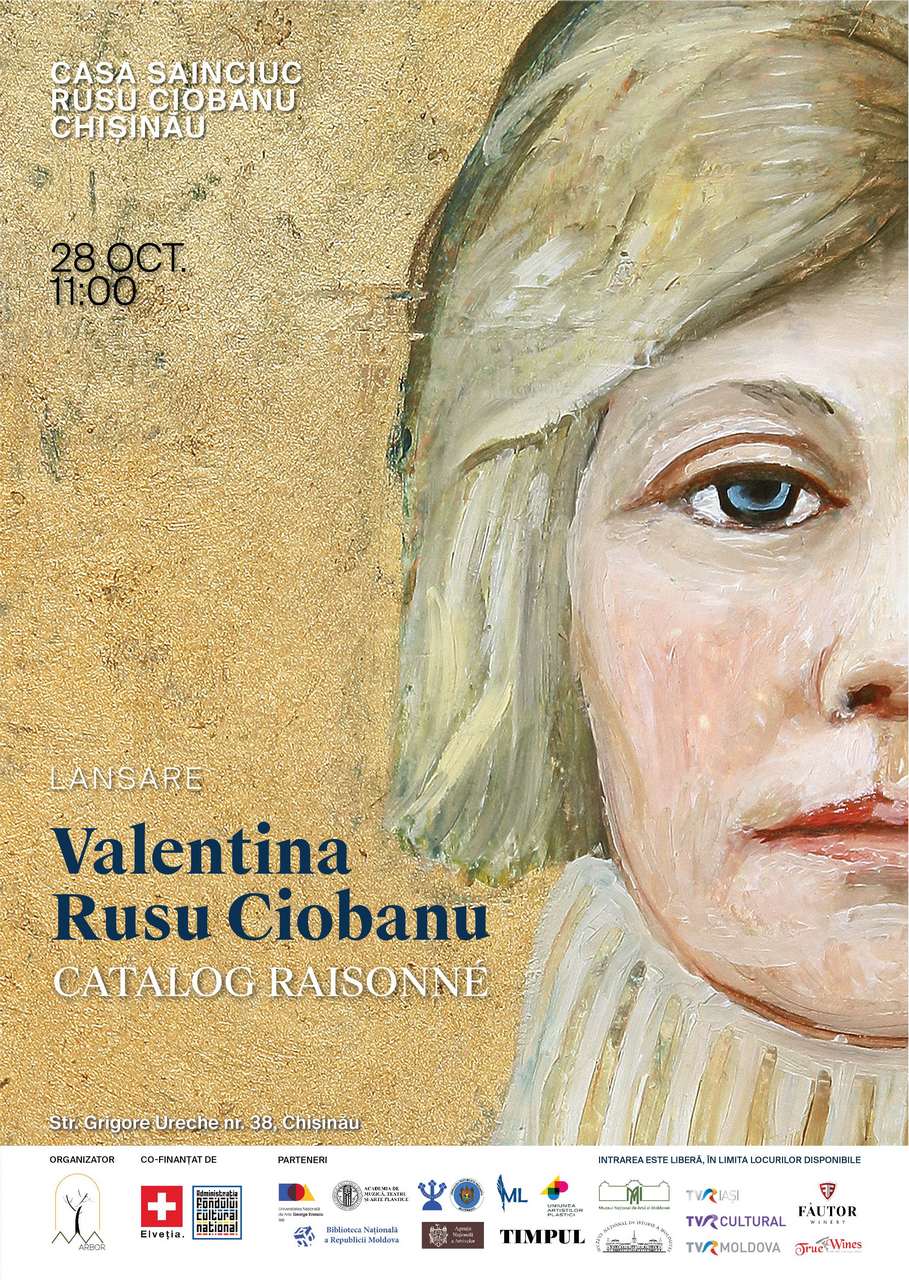 Launch: Catalog raisonné "Valentina Rusu Ciobanu" Launch: Catalog raisonné "Valentina Rusu Ciobanu"
Sainciuc House – Rusu Ciobanu Str. Grigore Ureche no. 38, Chisinau October 28, 2023, 11:00 a.m Speakers: Guido Beltrani, director of the Swiss Cooperation Office (SDC) in the Republic of Moldova (welcome message), Dr. Constantin I. Ciobanu, Prof. Univ. Dr. Codrina-Laura Ioniță, other members of the editorial team, moderator Vitalie Ciobanu. Entry is free, subject to availability. Registration for these events is done by email at: contact@arborinstitute.eu Event video presentation: https://youtu.be/ADYQm3UIMMA Editorial team, collaborators and project partners Editorial team: Victoria Nagy Vajda, project manager, publisher Constantin I. Ciobanu, art historian Codrina-Laura Ioniță, art historian Rodica Ursachi, art historian Vitalie Ciobanu, writer Mircea V. Ciobanu, literary historian Lica Sainciuc, descendant Mirela Nagât, editor Ioana-Raluca Flangea, proofreader Elena Balinschi, researcher, National Library of the Republic of Moldavia Aurelian Lavric, researcher, National Archives Agency Serioja Bocsok, graphic designer Aurelian Ardeleanu, pre-press Iurie Foca, photographer Collaborators: Ludmila Toma, art historian Natalia Chernysheva, curator, State Tretyakov Gallery Polina Kolomeeț, deputy director of Heritage, MNAM Tudor Stavilă, art historian Natalia Polikarpov, translator Doina Gaideu, librarian Ludmila Vasilache, director, Moldova 2, Teleradio-Moldova Nina Parfentie, director of Heritage, Radio Moldova Project co-financed by: The Government of Switzerland through the Swiss Cooperation Office in Chisinau* Administration of the National Cultural Fund (Romania)** Main partners: National Library of the Republic of Moldova National Agency of Archives of the Republic of Moldova "George Enescu" National University of Arts from Iasi Academy of Music, Theater and Fine Arts from the Republic Moldavia TIMPUL culture magazine (Romania) SANTAVINERE Foundation Partners: Embassy of the Republic of Moldova in Romania The National Art Museum of Moldova National Museum of Romanian Literature, Chisinau The National Museum of History of Moldova Union of Visual Artists from the Republic of Moldova Media partners: Time magazine TVR Cultural TVR Iasi TVR Moldova * ** The project does not necessarily represent the position of the Administration of the National Cultural Fund. AFCN is not responsible for the content of the project or how the results of the project may be used. These are entirely the responsibility of the beneficiary of the funding. The project was carried out with the support of the Swiss Government. The content of this project does not necessarily reflect the view of the donor. Contact person: Victoria Nagy Vajda, phone: 0040752076623, e-mail: contact@arborinstitute.eu About the Arbor Association The Arbor Culture and Arts Association, established in 2017, is well known to the public for its constant effort in promoting dialogue between the Romanian public and Bessarabian artists, with the aim of developing cultural mobility between the two countries on the banks of the Prut. Arbor's activity covers several artistic fields. Thus, Arbor has organized over 30 art exhibitions, both in the space it owns, Arbor.art.room, and in private galleries, cultural centers, libraries or museums in the Republic of Moldova and Romania. The association also initiated educational projects, promoting written culture and performing arts, such as "Bus Culture", "Arbor Master Class", "Romanian novel from the left of the Prut", "Abandoned stories", "Glass menagerie". Arbor projects are carried out in partnership with public and private institutions, such as the Bucharest City Museum, the National Museum of Romanian Literature in Chisinau and Iași, ARCUB, the National Library of the Republic of Moldova, the Alexei Mateevici Theatre, unteatru and others. During the pandemic, Arbor launched the first virtual reality (VR) art platform in Romania and the Republic of Moldova: www.theopen-art.com, where you can access the works of Romanian and Moldovan artists, as well as museum exhibitions in Chisinau. Arbor edited "The Book of Abandoned Stories" (2022) and five art albums - "Ghenadie Popescu", "Mark Verlan" (2019), "Valentina Rusu Ciobanu. 100 years since birth" (2020), "Remembering childhood, testimonies of Bessarabian deportees" (2022), "Valentina Rusu Ciobanu. Catalog raisonné" (2023). Last but not least, the association makes donations and sponsorships to educational and cultural institutions, NGOs, theaters and artists.
|




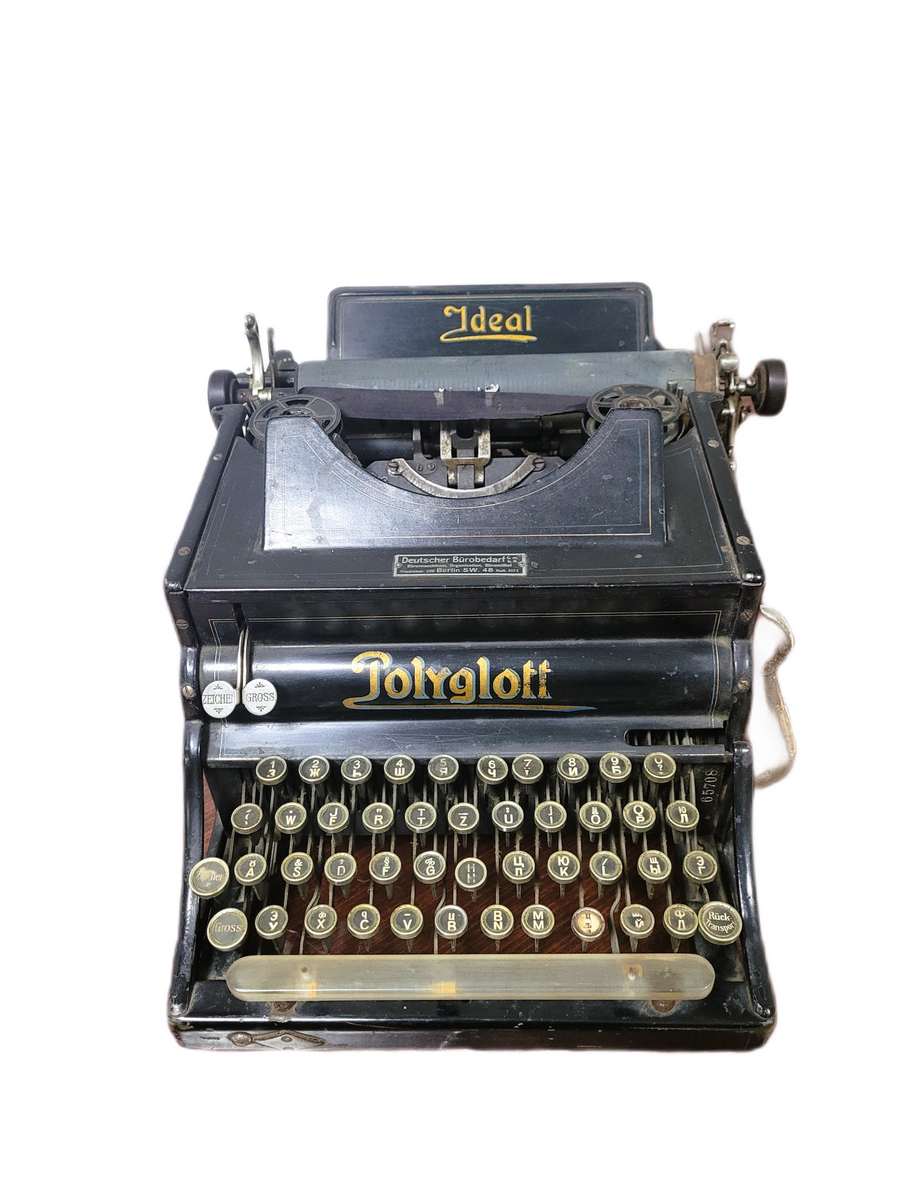
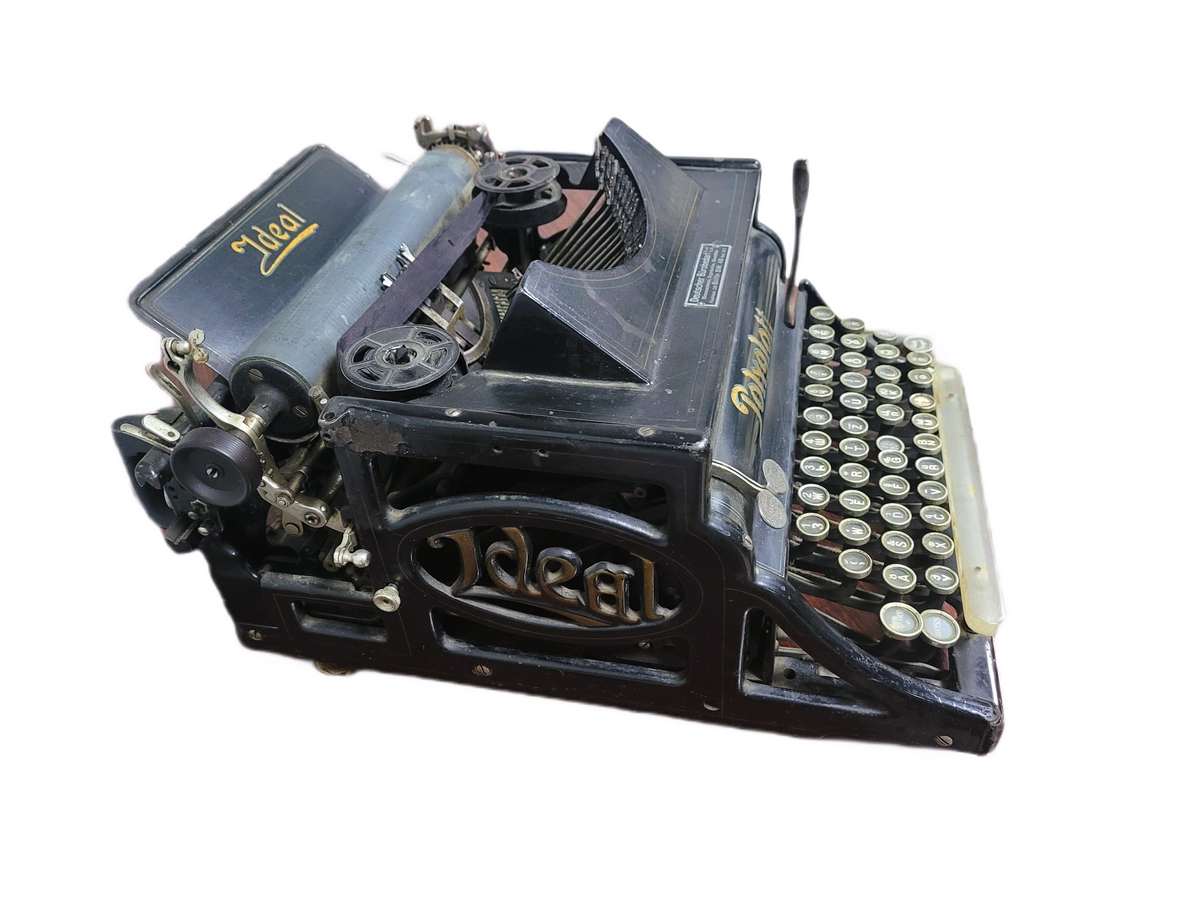 The side panels are elegantly decorated with refined cast-iron elements in the Art Nouveau style, displaying the brand name - "Ideal." The Polyglott model, featuring a bilingual keyboard patented in the United Kingdom by Max Klaczko from Riga, Latvia, was produced between 1902 and 1913, marking the first typewriter capable of writing in two languages. The "Ideal Polyglott" typewriter was actively sold in the Russian Empire and gained significant popularity in Poland, Bulgaria, and Serbia.
The side panels are elegantly decorated with refined cast-iron elements in the Art Nouveau style, displaying the brand name - "Ideal." The Polyglott model, featuring a bilingual keyboard patented in the United Kingdom by Max Klaczko from Riga, Latvia, was produced between 1902 and 1913, marking the first typewriter capable of writing in two languages. The "Ideal Polyglott" typewriter was actively sold in the Russian Empire and gained significant popularity in Poland, Bulgaria, and Serbia.






%20Glebus%20Sainciuc,%20Valentina%20Rusu%20Ciobanu,%20Lic%C4%83%20Sainciuc%20%C8%99.jpg)




























